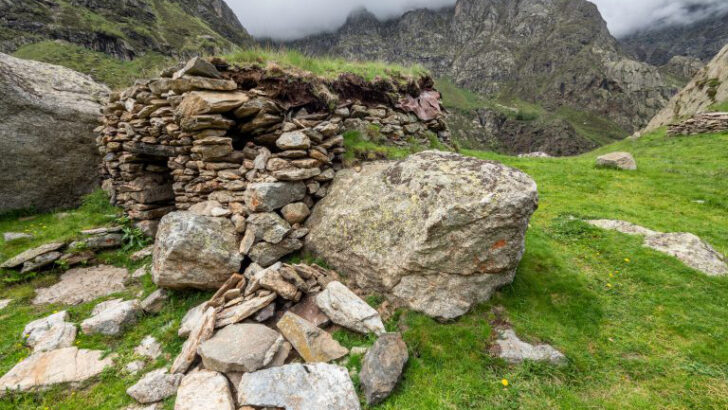An exhibition by Anthony Kelly, Seán McCrum, Peter Reid, and Paddy Sammon in the Irish Architectural Archives, 45 Merrion Square; run to 29 March 2024; free
The Ariège is a French department that lies in the Pyrenees between Carcassonne and the mountain state of Andorra. It is one of the least populated regions of France, and as a result preserves many traditions of the past, and is crisscrossed by the tracks of ancient peoples and faiths, a place of hermits, shepherds and smugglers.
The multimedia Chemins de migration (which might be translated as ‘the paths of people movement’) combines colour and black and white photographs with sound and video, with a background from Troubadour and Sephardic songs, is an immersive event.
It centres on sites in southern France where those involved experienced a curiously localised sense of migration and place.
The places recorded include stone shepherds’ huts, the site of an ancient grain mill, a castle celebrated for Troubadour music and culture, as well as one abandoned in the historical shifting of borders and allegiances between what are now France and Spain over the centuries. They focus especially on one such, Roquefixade Castle.
The artists involved explain: “It looks at the ways we experience a sense of place – hard to define yet unmistakable when we feel it”.
How did simple stone shepherds’ huts in the Pyrenees act as a portal, leading visual and sound artists’ imaginations to connect with the relationship of landscapes to buildings? Why is this combination of sound and visual so important?
A small but intriguing exhibition, well worth a visit. And those inspired to actually tour the region should make sure that they visit not only the magnificent 19th Century restoration of the Cité de Carcassone by architect Eugène Viollet-le-Duc, but also the cathedral in the high mountain town of St Bertrand-de-Comminges (easily reached from Lourdes), two of the most important survivals of medieval culture in South-West France.


 Peter Costello
Peter Costello A shepherd’s summer hut in the high Pyrenees. Photo: Peter Reid
A shepherd’s summer hut in the high Pyrenees. Photo: Peter Reid 